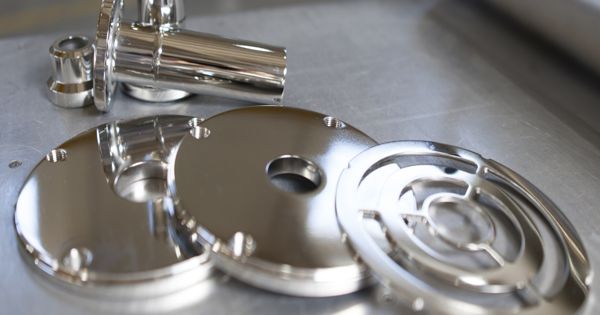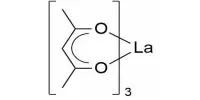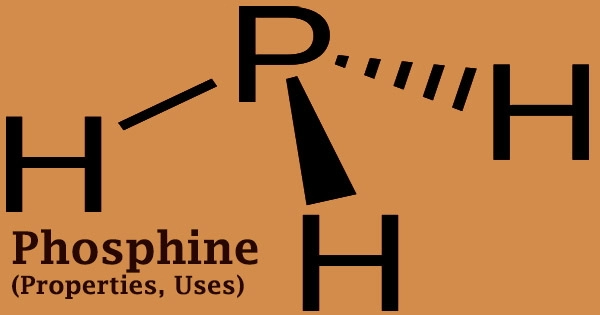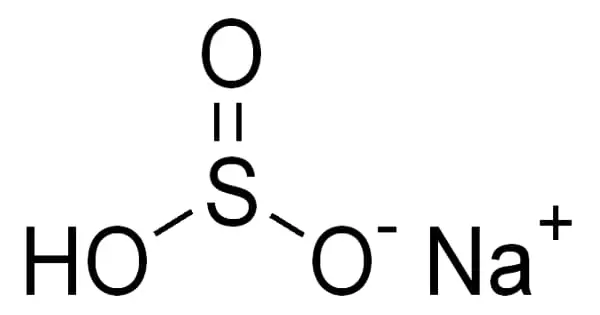Electropolishing is an electrochemical finishing process that removes a thin layer of material from a metal part, typically stainless steel or similar alloys. It is also known as electrochemical polishing, anodic polishing, or electrolytic polishing, is an electrochemical process that removes material from a metallic workpiece, reducing the surface roughness by leveling micro-peaks and valleys, improving the surface finish. It is used to polish, passivate, and deburr metal parts. The process leaves a shiny, smooth, ultra-clean surface finish.
Electropolishing is an electrochemical process similar to, but the reverse of, electroplating. It may be used in lieu of abrasive fine polishing in microstructural preparation.
It is often described as the reverse of electroplating. It is especially useful for polishing and deburring parts that are fragile or have complex geometries. It may be used in lieu of abrasive fine polishing in microstructural preparation.
Electropolishing principle:
(1) Electrolyte, (2) Cathode, (3) Work-piece to polish (Anode), (4) Particle moving from the work-piece to the cathode, (5) Surface before polishing, (6) Surface after polishing.
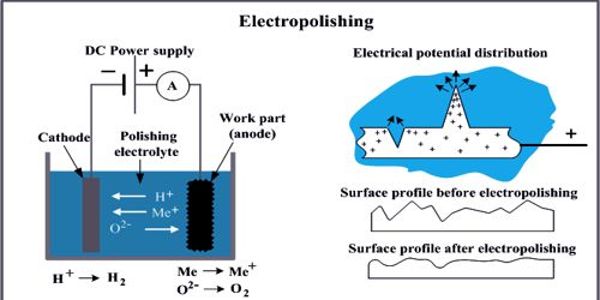
Mechanism
Electropolishing can be thought of as reverse electroplating. Typically, the work-piece is immersed in a temperature-controlled bath of electrolyte and serves as the anode; it is connected to the positive terminal of a DC power supply, the negative terminal being attached to the cathode. The work-piece is connected to the positive terminal of a DC power rectifier. A current passes from the anode, where metal on the surface is oxidised and dissolved in the electrolyte, to the cathode. The negatively-charged cathode, generally made of stainless steel or zirconium, is connected to the negative terminal of the DC power rectifier. At the cathode, a reduction reaction occurs, which normally produces hydrogen.
Both anode and cathode are immersed in a temperature-controlled bath of electrolyte solution, typically consisting of a high-viscosity mixture of sulfuric acid and phosphoric acid. Electrolytes used for electropolishing are most often concentrated acid solutions having a high viscosity, such as mixtures of sulfuric acid and phosphoric acid. The electrical current causes metal ions on the surface of the part to oxidize and dissolve into the electrolyte.
To electropolish a rough surface, the protruding parts of a surface profile must dissolve faster than the recesses. Electrical current from the rectifier is conducted from the anode to the cathode through the electrolyte. This process, referred to as anodic levelling, can be subject to incorrect analysis when measuring the surface topography. This process can dissolve extremely small, tightly controlled amounts of metal, resulting in micron-level thickness of surface removal. Anodic dissolution under electropolishing conditions deburrs metal objects due to increased current density on corners and burrs. In the process of electropolishing, burrs and other peaks of surface roughness attract greater electrical current density and erode first in a phenomenon known as anodic leveling.
Information Source:
